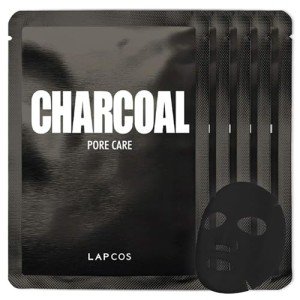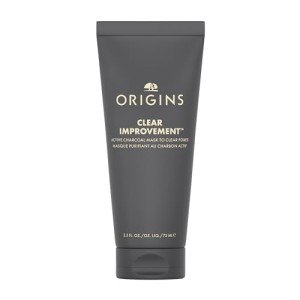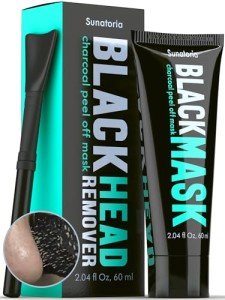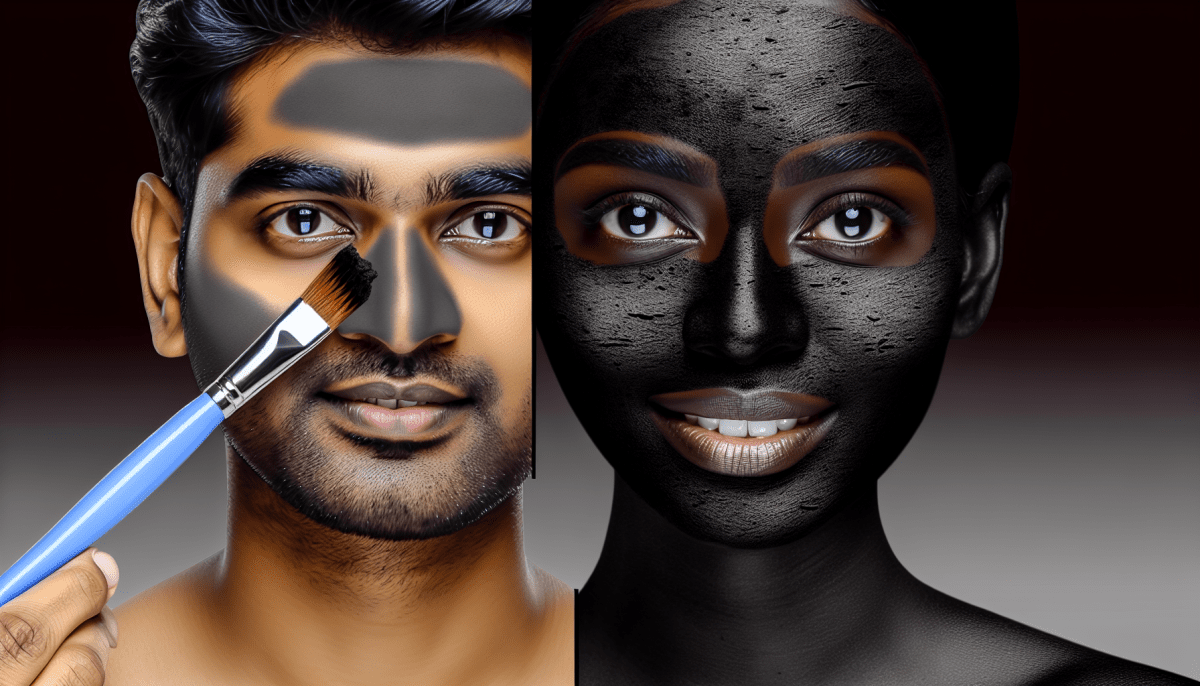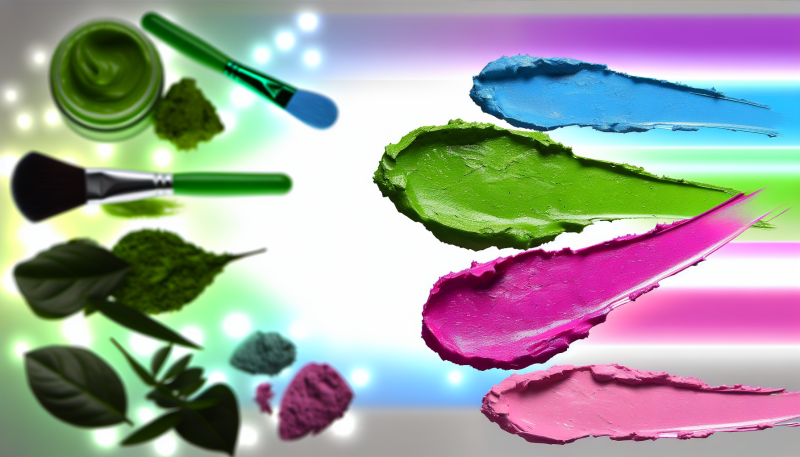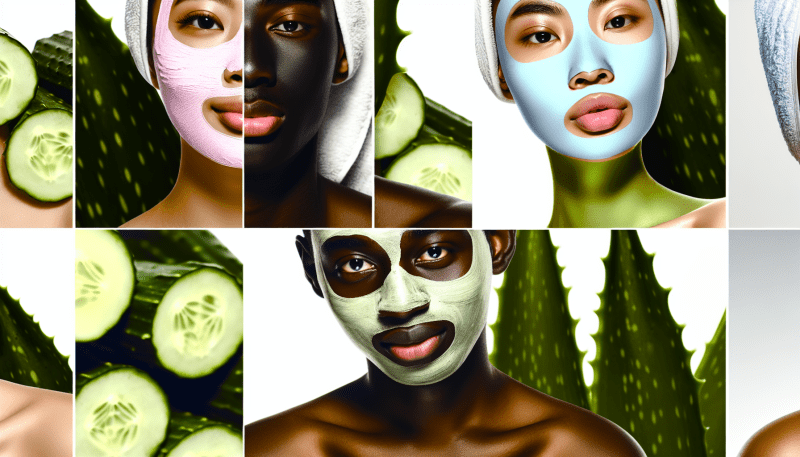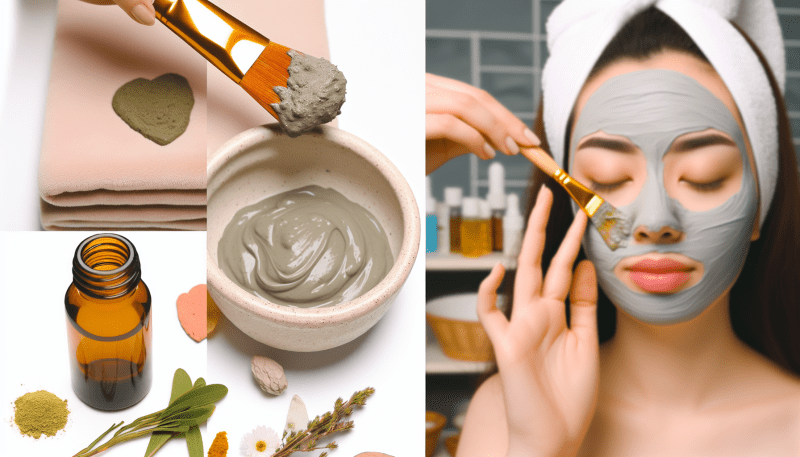Charcoal face masks have taken the skincare world by storm, famous for their deep-cleansing and detoxifying properties. These jet-black masks contain activated charcoal, an ingredient known to draw out impurities like a magnet, leaving your skin feeling refreshed and looking clearer. They’ve become a go-to weekly treatment for those with oily or congested skin who want to minimize blackheads and achieve a radiant complexion. But what exactly are charcoal masks, and do they really work as well as people say? In this article, we’ll explore what charcoal masks are, charcoal face mask benefits, how they work, how to use them properly, and which skin types will benefit the most.
Interestingly, charcoal as a cleansing remedy isn’t a new fad at all — it has roots in ancient history. Activated charcoal has been used for centuries by various cultures for purification and healing. From ancient Egypt and Greece using charcoal to filter water and treat ailments, to traditional Chinese and Ayurvedic medicine applying it to remove toxins, this ingredient has a long track record. Even in the 16th-century Ming Dynasty, records suggest charcoal was mixed into skin treatments to keep complexions youthful. Fast forward to today, and this age-old purifier has found a home in modern skincare. Charcoal face masks are now a staple in many beauty routines, marrying historical wisdom with contemporary skincare science.
What Are Charcoal Face Masks?
Charcoal face masks are skincare treatments that use activated charcoal as a key ingredient. Activated charcoal (also called activated carbon) is a special form of charcoal processed at high heat to make it extremely porous. This means it has tons of tiny holes, allowing it to absorb impurities and excess oil from the skin effectively. In a face mask, this ingredient gives the product its characteristic black or gray color and its powerful purifying ability.
These masks come in a variety of formats to suit different preferences. The most common type is a wash-off charcoal mask – typically a cream, gel, or clay-based formula that you spread on your face, let dry, and then rinse off with water. There are also peel-off charcoal masks, which dry into a thin film that you can gently peel away from your skin. (You might have seen those viral videos of people peeling off black masks!) Additionally, some brands offer charcoal sheet masks – fiber sheets infused with charcoal and other ingredients that you lay over your face for a short time. Often, charcoal is combined with other beneficial components like clays (such as kaolin or bentonite), mud, plant extracts, or acids to enhance its effects. No matter the format, all charcoal masks share the same goal: to deeply cleanse and “detoxify” the skin by drawing out dirt, oil, and other impurities.
How Do Charcoal Masks Work?
The magic of a charcoal mask lies in the activated charcoal itself. Think of activated charcoal like a sponge or magnet for impurities. When applied to your skin, the charcoal’s millions of microscopic pores act like traps for substances that cause congestion. It binds to dirt, excess oil (sebum), and other debris on the surface of your skin and within your pores. As the mask sits on your face (and especially as it dries, in the case of wash-off masks), it pulls these impurities into itself.
When you remove the mask, all that trapped gunk comes off along with it. In essence, a charcoal mask gives your pores a deep cleaning. It helps purge out the pollutants, dead skin cells, and bacteria that can lead to issues like blackheads, acne, and dullness. Many people find that after using a charcoal mask, their skin immediately feels cleaner and looks clearer, because much of the buildup that was clogging their pores is gone.
It’s worth noting that many charcoal masks aren’t just pure charcoal; they often include complementary ingredients that make them even more effective. For example, a charcoal clay mask will also soak up oils and provide minerals to the skin, while a charcoal mask with tea tree oil can add an extra antibacterial kick. The charcoal itself doesn’t actually get absorbed into your skin – it stays on the surface, doing its job of adsorbing (attracting and holding onto) unwanted substances. Once you rinse or peel it off, those impurities go with it, leaving your skin purified. This deep-cleansing action is the primary reason charcoal masks have become so popular for achieving a clearer, healthier-looking complexion.
Charcoal Face Mask Benefits
Using a charcoal mask as part of your skincare routine can offer several advantages. Here are some of the top charcoal face mask benefits you can expect:
-
Deep Pore Cleansing: Charcoal masks excel at deep-cleaning your pores. They draw out dirt, oil, and debris that can get trapped inside, helping to unclog pores and reduce the occurrence of blackheads. With regular use, you might notice fewer bumps and clearer pores, especially around the nose and chin where congestion tends to build up.
-
Oil Absorption and Shine Control: If you have oily skin or a constantly shiny T-zone, a charcoal face mask can help. Activated charcoal absorbs excess oil from the skin’s surface, leaving your face feeling more balanced and matte (but not overly dry or tight). This matte effect can last for days, meaning less breakthrough shine and fewer blotting papers needed during the day.
-
Blackhead Reduction: By removing the buildup that leads to blackheads, charcoal masks can help reduce their appearance. They won’t “cure” deep blackheads overnight, but they can loosen blackhead plugs and make them easier to remove, and over time help prevent new ones from forming as often. Regular use might make those stubborn black dots less noticeable.
-
Removes Impurities & Pollutants: Every day, our skin faces pollution, smoke, and other environmental toxins that can dull the complexion. Charcoal masks act like a magnet for these impurities, lifting away microscopic particles of pollution and grime. The result is a skin “detox” effect — after using the mask, your skin feels exceptionally clean and refreshed, as if you’ve hit a reset button on a congested face.
-
Smoother, Clearer Skin: Once impurities and excess oils are lifted away, your skin is left softer and smoother. Many people notice that their complexion looks brighter and more even after a charcoal mask. By helping to purge clogged pores and sweep away dead skin, charcoal masks can improve overall skin texture, giving you a healthy glow and a smoother canvas for makeup or other skincare products.
Charcoal Masks vs. Clay Masks
Both charcoal masks and traditional clay masks are popular for deep cleaning the skin, and they do have a lot in common. In fact, you’ll often find charcoal and clay together in one formula for a one-two punch against impurities. However, there are some differences in how they work and feel:
-
Ingredients and Action: Clay masks are typically made with natural clays like kaolin or bentonite. These clays work by absorbing oil and water from your skin and, as they dry, they draw out impurities and have a tightening effect on the skin. Charcoal masks use activated charcoal to adsorb impurities (stick them to its surface) as described earlier. In practice, both will help clean out pores and reduce oil, but clay is like a sponge for liquid (oil, sweat) while charcoal is like a magnet for tiny particles (dirt, toxins, oil).
-
Texture and Feel: A pure clay mask usually has a thick, mud-like texture and often dries into a hard, crackable layer on your face. A charcoal mask, especially one combined with clay, can feel similar, though sometimes charcoal masks (especially peel-off versions) have a more glue-like or gel texture when drying. Clay masks might come in various colors (from white to green to brown) depending on the clay and added ingredients, whereas charcoal masks are generally dark gray or black due to the charcoal powder.
-
Use and Skin Types: Both types are excellent for oily or acne-prone skin since they reduce grease and clean pores. If you have very sensitive skin, a plain clay mask might feel a bit gentler, as some charcoal masks (particularly peel-off ones or those with high charcoal content) can be slightly more drying or intense. However, this isn’t a hard rule — it really depends on the product formulation. Many charcoal masks include soothing agents to counter any harshness. On the flip side, clays can sometimes be drying too. It’s not uncommon to alternate between a clay mask and a charcoal mask, or even use a combo product, to get the best of both worlds. For example, some people with combination skin might use a charcoal mask on the T-zone (forehead, nose, chin) where they have blackheads, and a gentler clay or hydrating mask on the cheeks.
Bottom line: Charcoal masks and clay masks both aim to purify the skin. Clay has a long history (legend says Cleopatra used Dead Sea mud as a face mask) and is great for soaking up oil and tightening pores. Charcoal is the newer star that’s superb at grabbing onto deep impurities. You don’t necessarily have to choose one over the other — you can pick based on what your skin needs at the moment. If your main goal is to clear out deep pore gunk and combat pollution, charcoal might edge ahead. If you want to calm an extra-oily face and gently clarify, a classic clay mask could do the trick. Many people incorporate both into their routine at different times.
Charcoal Masks vs. Peel-Off Masks
You might be wondering how charcoal masks compare to other popular mask formats, especially peel-off masks. The interesting part here is that charcoal masks can be peel-off masks — the two concepts are not mutually exclusive. In fact, some of the most famous charcoal masks on social media are the peel-off kind (those videos of peeling off a black mask and supposedly yanking out blackheads in the process). Let’s break down the differences and what to expect:
-
Peel-Off vs. Wash-Off: A peel-off mask is a mask that you peel off your face after it dries. It doesn’t have to contain charcoal (there are peel-off masks with other ingredients like fruit enzymes, glitter, etc.), but many do feature charcoal because of its pore-cleansing appeal. A wash-off mask (which is what most clay masks and some charcoal masks are) is simply rinsed off with water after it dries or after a set time. The primary difference is in the removal method. Peel-off masks cling to the top layer of your skin and any debris in your pores, and when you peel the mask away, it physically pulls out some of that debris. Wash-off masks, in contrast, pull out impurities into the mask without the somewhat harsh peeling action, and you wash everything down the drain.
-
Experience and Sensation: Using a peel-off charcoal mask can be oddly satisfying for some — once it’s dry, you get to lift it off in one piece (if all goes well) and maybe even see little dots of extracted gunk on the removed mask. However, that satisfaction can come with a price: peel-off masks can be irritating. The act of peeling can tug at your skin and even tiny facial hairs. If you have sensitive skin or active acne, a peel-off mask might cause redness or inflammation. Many people have tried those internet-famous charcoal peel masks only to find they were very painful to remove! On the other hand, a wash-off charcoal mask might be a bit messier to take off (you need water and maybe a washcloth), but it’s generally gentler since you’re not pulling on the skin.
-
Effectiveness: Both peel-off and wash-off charcoal masks aim to deep-clean pores. A peel-off might remove some surface-level blackheads and dead skin simply by the mechanical action of peeling, whereas a wash-off relies purely on the charcoal (and other ingredients) to do the cleaning. In terms of deep impurity removal, activated charcoal itself will work similarly in both. So choosing between them is more about what your skin can tolerate and what you find enjoyable. Some people use a charcoal peel-off mask occasionally for a thorough pore purge, and a regular charcoal clay mask weekly for maintenance.
A note of caution: If you opt for a charcoal peel-off mask, use it carefully. Apply a thin, even layer (too thick and it won’t dry properly, too thin and it might be hard to peel off in one go). Avoid areas with hair (eyebrows, sideburns) – you don’t want the mask grabbing onto those. And when it’s time to remove, peel slowly, pulling the mask parallel to your face (not straight out away from skin) to minimize tugging. It shouldn’t be extremely painful; if it is, it might not be the right product for you. Remember, the goal is to clean out pores, not to wax your face! If peel-offs aren’t your thing, a traditional charcoal wash-off mask will still give you great results without the drama.
Common Skin Concerns Charcoal Masks Can Help With
One reason charcoal masks are so popular is that they address several common skin concerns. Here are a few issues people often target with charcoal masks, and how these masks can help:
-
Blackheads & Clogged Pores: If you struggle with blackheads (those stubborn black dots on your nose, chin, or forehead), a charcoal mask might become your new best friend. Charcoal masks are a popular remedy for blackheads because they help draw out the dirt, oxidized oil, and dead skin that plug up pores. By unclogging congested pores, these masks can make blackheads less noticeable and your pores appear smaller. They won’t remove every blackhead like a magic eraser, but they do loosen up the plugs and often lift out the very top of the blackhead, making it easier to cleanse or extract the rest. (Tip: The best charcoal mask for blackheads may include additional ingredients like clay or salicylic acid, which can boost its pore-clearing power. Look for a product that mentions blackheads on its label if that’s your main concern.) Regular use can also help prevent new blackheads from forming as frequently by keeping your pores clearer.
-
Oily Skin and Shine: Anyone with very oily skin knows the pain of looking in the mirror at midday and seeing a slick, shiny face. Charcoal masks are great for oil control. They absorb excess sebum (skin oil), which helps mattify the skin. If used once or twice a week, a charcoal mask can keep your oiliness in check, resulting in less shine on the nose and forehead. This is especially useful in hot, humid weather or if you have an oily T-zone. The mask basically gives your skin a fresh start by removing the build-up of oil, so you’ll notice your face doesn’t get greasy again as quickly as it normally might. Just remember to moisturize after (even oily skin needs hydration!) so your skin doesn’t overcompensate by producing even more oil.
-
Acne-Prone Skin: If you get frequent breakouts, you might find a friend in charcoal masks. Now, to set expectations, charcoal masks are not a cure for acne – they don’t kill acne bacteria like a medicated treatment would, but they can assist in an anti-acne routine. By keeping your pores cleaner and less clogged, charcoal masks remove one of the factors that can lead to pimples (namely, the clog itself). Some charcoal masks also include acne-fighting ingredients like tea tree oil, witch hazel, or salicylic acid which can further help reduce breakouts. The result for many users is fewer new pimples and a reduction in the size of existing ones, especially those related to excess oil and grime. If you have a lot of inflamed acne, you do want to be gentle – don’t scrub harshly when rinsing off the mask, and perhaps avoid peel-off versions that could irritate active pimples. But a soothing charcoal clay mask might calm some inflammation and make your skin feel calmer and cleaner. It’s a helpful complement to your acne treatments, not a replacement for things like benzoyl peroxide or prescription meds if those are needed.
-
Skin Exposed to Pollution: City dwellers and anyone exposed to traffic exhaust, smoke, or industrial pollutants can benefit from the detoxifying nature of charcoal masks. Pollution particles are tiny and can clog pores or stick to the skin, contributing to dullness, irritation, or even accelerated aging. A charcoal mask can help remove pollution and impurities from your skin after a long day out and about. Consider it a way to deep-clean beyond what your daily cleanser can do. If you commute in a city or spend time in an environment with poor air quality, using a charcoal mask once a week can lift off those pollutants. Your skin will likely look brighter and feel much cleaner. Some people even call charcoal masks an “antidote to city skin.” Of course, it’s still important to cleanse daily and wear sunscreen and possibly antioxidant serums if you’re concerned about pollution, but a charcoal mask is a nice occasional intensive cleanse for that grunge that’s hard to see.
(What about dry or sensitive skin?) Charcoal masks are generally targeted at the above issues, which are more common for oily/combination skin. If you have very dry or sensitive skin, you might find charcoal masks too drying if used too often. However, you can still use them occasionally (for example, just on your nose or chin where pores may be clogged, rather than all over your face). If you do, look for a charcoal mask that also has moisturizing or calming ingredients (like aloe vera, glycerin, or hyaluronic acid) and always follow up with a good moisturizer. And as always, listen to your skin — if it reacts with a lot of redness or irritation, charcoal masks might not be the best match for you.
How to Use a Charcoal Face Mask
Using a charcoal face mask correctly will ensure you get the best results without irritating your skin. Here’s a step-by-step guide on how to use a charcoal face mask safely and effectively:
-
Start with a clean face. Before applying any face mask, wash your face with a gentle cleanser to remove surface dirt, oil, and makeup. Having clean skin helps the mask work properly by giving it direct access to your pores (instead of having to get through a layer of makeup or grime). Pat your skin dry with a towel after cleansing.
-
Apply an even layer of the mask. Using clean fingertips or a brush (some masks come with an applicator brush), spread a thin, even layer of the charcoal mask over your face. Avoid your eye area and lips, as the skin there is more sensitive and masks shouldn’t be applied there. If you’re using a peel-off charcoal mask, also be careful to keep it out of your eyebrows and away from your hairline – basically, only put it on areas of skin that you’ll be comfortable peeling it off from. You can apply the mask to your entire face (minus those areas), or just target specific zones (for example, just your nose and chin if those are your problem areas). Make sure the layer is not too thick or too thin – usually opaque coverage is good (you shouldn’t see much skin through it), but you also don’t need gobs of product.
-
Let it sit for the recommended time. Check the instructions on your mask, but generally, 10 to 15 minutes is a common wait time. During this period, the mask will begin to dry (for a wash-off type, you’ll feel it tightening; for a peel-off, it will turn from wet and shiny to a matte, rubbery texture). While it’s on, you might feel a slight cooling, tingling, or tightening sensation – that’s normal. If you feel any burning or intense discomfort, however, you should wash it off immediately (more on that in the tips section). Do not leave the mask on much longer than directed. Letting a charcoal mask dry out completely for a long time can actually start drawing moisture from your skin that you don’t want to lose. More time doesn’t equal more benefit in this case. When in doubt, follow the product’s timing guidelines or err on the side of shorter rather than longer wear.
-
Remove the mask gently. How you take off the mask will depend on the type of mask. For wash-off charcoal masks: Rinse your face with lukewarm water. It can help to wet your hands and gently massage your face in circular motions as you rinse, which loosens the mask. You might use a soft washcloth to assist, but don’t scrub aggressively. Continue rinsing until all the mask is gone – you shouldn’t see any gray or black residue on your skin or in your pores. For peel-off charcoal masks: Once the mask is fully dry (it will feel firm to the touch and no longer sticky), slowly peel it off. Start at the edges; a good spot is usually near the bottom of your face or along the sides. Peel slowly and steadily upward or sideways. If the mask is well-dried, it should come off in fairly large pieces (maybe even one piece). Take your time with this to avoid irritating your skin. If it hurts a lot or if some bits won’t peel, don’t force it – you can wet those parts and gently wash them off instead.
-
Rinse off any residue and pat skin dry. After peeling off a mask, you might have a few leftover bits around the edges or some residue. Use warm water to remove whatever is left. It’s important to get all the mask off so that those impurities we wanted to remove actually get washed away and don’t linger on your skin. Once completely clean, pat (don’t rub) your face dry with a clean towel.
-
Moisturize and continue your routine. After a deep-cleansing treatment like a charcoal mask, your skin will appreciate some hydration. Apply a light moisturizer (or your usual face cream) to replenish moisture and soothe the skin. This also helps maintain your skin’s barrier, which might have lost some oils during the masking. If it’s daytime, follow up with sunscreen before you head out, since freshly exfoliated or cleansed skin can be a bit more sensitive to the sun.
How often should you use a charcoal mask? For most people, once or twice a week is ideal. Charcoal masks are potent cleansers, so you don’t need to use them every day. In fact, using them too often could dry out or irritate your skin. If you have very oily skin or a lot of breakouts, you might use it up to 2–3 times a week, but start slow and see how your skin reacts. For normal or combination skin, once a week is usually enough to keep pores clear. And for dry or sensitive skin, stick to once a week at most, or even once every two weeks, focusing on problem areas only. Always let your skin rest a few days between mask sessions.
Skin type considerations: Charcoal masks tend to work best for those with oily, combination, or normal skin that experiences congestion (blackheads, whiteheads, or general “gunk”). If you have combination skin, you can apply the mask just to your oily areas (like your forehead, nose, and chin) and avoid the drier parts of your face. This technique is called multimasking (using different masks on different face zones) and can be very effective. For those with sensitive or dry skin, you can still use charcoal masks, but choose one that is gentle – perhaps a charcoal mask that is labeled hydrating or balancing. Always do a patch test (apply a small bit on your inner arm or behind ear) before putting it on your face, to make sure you don’t have a reaction. And don’t forget to moisturize well after use. If you find even gentle charcoal masks leave your skin red or irritated, you might want to skip them and try a different kind of mask (like a moisturizing or soothing mask) for your skincare needs instead.
Tips and Common Mistakes to Avoid
To get the most out of your charcoal mask and to keep your skin happy, keep these practical tips in mind. Avoiding common mistakes will ensure your experience is positive and your results are glowing:
-
Do a patch test first: Whenever you try a new mask (or any new skincare product), it’s smart to test it on a small area of skin first. Put a tiny amount on the inside of your wrist or behind your ear and let it dry, then wash it off. Wait a few hours to see if any redness or irritation pops up. If not, you’re likely good to go. This simple test can save you from a face-full of rash if it turns out you’re sensitive to something in the mask. It’s especially important if you have sensitive or allergy-prone skin.
-
Follow the product instructions: It might be tempting to leave a mask on longer than instructed or apply more than necessary (“to get extra benefit”), but it’s best to stick to what the product recommends. The makers have tested how it works best. If the jar says 10 minutes, don’t wear it for 30. If it says “apply a thin layer,” don’t cake it on. Using more or leaving it longer won’t necessarily give you more benefits – in fact, it could cause dryness or irritation. Likewise, pay attention to any instructions about how to remove it or any precautions on the label.
-
Don’t overuse the mask: More isn’t always better in skincare. Charcoal masks are generally a once- or twice-a-week treatment, not a daily cleanser. Using them too often can strip away too much natural oil from your skin, leading to dryness, flakiness, or even a rebound effect where your skin produces extra oil to compensate. Over-masking can also disrupt your skin’s pH or protective barrier. So, enjoy your charcoal mask in moderation. Think of it as a special deep clean, not your everyday wash.
-
Avoid sensitive areas and broken skin: Keep the mask off areas that don’t need it. This means your eyes and lips are no-go zones (the skin there is delicate and can get dry or irritated easily). If you have an open pimple, a cut, or an area of eczema, don’t cover it with the mask – charcoal masks can be too drying or aggravating on wounded skin. And definitely, as mentioned, if it’s a peel-off mask, steer clear of your eyebrows and hairline. If you accidentally get some in an unwanted area, wipe it off with a damp cloth before it dries. It’s much easier to remove when wet!
-
Remove gently: When it’s time to take the mask off, treat your skin kindly. If you’re rinsing, use lukewarm water (hot water can be too harsh and drying) and gentle motions. You can splash water and then use your fingertips to dissolve the mask a bit at a time. If a wash-off mask has dried very hard, you can lay a warm, damp washcloth on your face for a moment to soften it, then rinse. For peel-offs, as noted earlier, peel slowly. Never rip or yank the mask off, no matter how impatient you are. If peeling hurts, moisten the area and switch to wiping it off instead. The goal is to deep-clean, not to exfoliate by force or leave your face red and raw.
-
Listen to your skin: It’s normal for a charcoal mask to give a little tingle or a feeling of tightness as it works. However, it should not burn or sting severely. If you feel a lot of burning or your skin starts to feel very uncomfortable while the mask is on, don’t wait the full time – go ahead and rinse it off immediately. Some mild ingredients (like mint or menthol or certain clays) can cause a cooling sensation, but real pain is a warning. After removing the mask, if your skin looks very red or feels irritated, give it a break next time (use the mask for less time or choose a gentler product). Skincare should never be extremely painful. A slight discomfort with peel-offs is common (like pulling off a bandage), but it should be tolerable. Always prioritize your skin’s health over “toughing it out.”
-
Moisturize after masking: This tip is so important it’s worth repeating. After you use a charcoal mask, always apply a moisturizer or hydrating serum. Even if your skin doesn’t feel particularly dry, the mask has removed oils and impurities, and adding moisture back helps keep your skin balanced. This can prevent any dryness or irritation and also helps your skin barrier recover. Hydrated skin is healthy skin, and it will also look smoother and more glowing after the deep cleanse you just gave it.
-
Don’t expect miracles: Charcoal masks can do a lot – they can clean out your pores, temporarily reduce oiliness, and make your skin look clearer. But it’s important to have realistic expectations. They likely won’t completely eliminate chronic acne or erase deep blackheads permanently after one use. Skincare is about consistency and a combination of good habits. Think of your charcoal mask as a powerful tool in your toolbox: it will help keep your skin in good shape, but you still need the rest of the routine (daily gentle cleansing, maybe exfoliating acids or retinol, moisturizing, sun protection, etc.) for the best results. Also, individual results vary. Some people see a big difference from charcoal masks, while others might see a subtle change. Give it a few tries (with days in between) to judge how it’s working for you. And if your skin doesn’t love it, that’s okay — there are other masks and methods out there. The key is that you’re taking steps to care for your skin, and that’s always a good thing!
Final Thoughts on Charcoal Masks
Charcoal masks can be a fantastic addition to your skincare routine, especially if you battle blackheads, oily skin, or daily exposure to pollution. By leveraging the power of activated charcoal’s deep-cleansing abilities, these masks give your skin an extra helping hand in staying clear and healthy. When used correctly and in moderation, a charcoal mask leaves your face feeling remarkably clean, smooth, and refreshed. Many users love the immediate glow and softness after peeling or washing off a charcoal mask — it’s a satisfying payoff for a few minutes of self-care.
Remember that consistency and care are key. Use your charcoal mask as a boost to your routine: for example, on a Sunday night to cleanse the week’s grime away or mid-week when your skin needs a pick-me-up. Pair it with a good daily cleanser and moisturizer, and you’re on your way to a cleaner complexion. Everyone’s skin is different, so pay attention to how your face reacts and adjust usage accordingly. With the practical tips above and a bit of trial and error, you can find the sweet spot where a charcoal mask benefits you the most.
In summary, the benefits of charcoal masks are real — from clearer pores and fewer blackheads to reduced shine and protection against environmental gunk. It’s like a little detox session for your face. So if you haven’t tried one yet and you’re curious, go ahead and give a charcoal face mask a whirl! Just follow the guidelines, enjoy the process (there’s something fun about painting your face black and chilling for a few minutes), and look forward to that fresh-face feeling afterward. Your skin will thank you for the deep clean. Happy masking!
Disclaimer: This article is for informational purposes only and not intended as medical advice. Always patch test new skincare products and consult with a dermatologist or skincare professional if you have persistent skin issues or sensitivities. Individual results may vary, and what works for most may not work for everyone’s unique skin.
